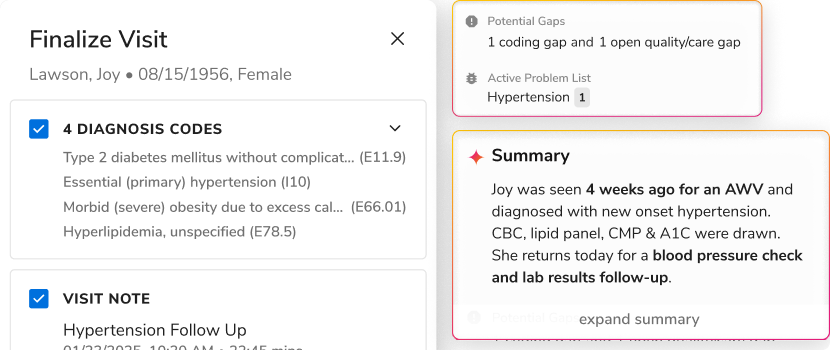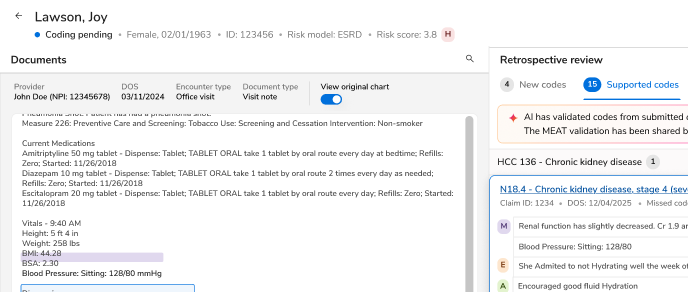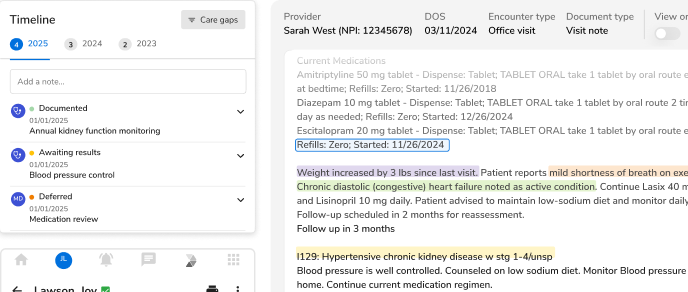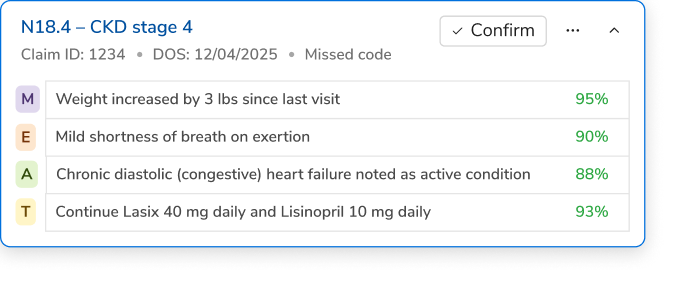Missed Appointments = Missed Revenue: How can AI Personalize Patient Reminders


Healthcare organizations lose $150 billion annually through patient no-shows. And still most haven't been able to find an effective solution.
A recent discussion on r/FPandA captured this problem. When a team proposed charging health plans for missed appointments, their CFO responded: "These cancellations are our internal challenge. Let's remedy them operationally rather than billing the client."
This approach separates successful practices from struggling ones. They try to fix the root problem instead of passing costs to others.
The shift to utilising the powers of Artificial Intelligence to increase productivity and revenues is evident across industries. And healthcare is no different. AI-powered patient engagement works differently than traditional systems. While most organizations send generic reminders to thousands of patients, AI learns individual behaviors. It learns that Katherine responds to Spanish-language texts, while Jim ignores messages but always answers calls.
This shift from mass communication to personalized outreach is changing how healthcare organizations handle patient engagement and revenue.
The Traditional Approach: When One Size Fits None
Let’s assume, Emily works as a front desk receptionist at a three-physician clinic in Arkansas. Every Monday morning, she spends two hours calling patients scheduled for the upcoming week. The clinic serves 6,000 patients.
She reaches about half of them. The rest get voicemails.
The clinic's backup system sends automated text messages 48 hours before appointments. Every patient gets the same templatized message: "Your appointment is Tuesday at 2 PM. Please call to confirm or cancel."
This approach produces inconclusive results. A study shows that a clinic with a 23% no-show rate (average national rate), roughly costs $150,000 per physician annually. Emily spends 10 hours weekly on reminder calls, but high-risk patients still miss appointments.
These numbers are common. MGMA Stat surveyed 380 U.S. medical groups in 2023 about their standard reminder systems. More than half saw no improvement in no-show rates. Thirty-seven percent experienced increases. Only 11% achieved decreases.
The conclusion is clear: treating every patient the same way doesn't work anymore.
How AI can Influence the Effectiveness of your Patient Reminder System
Now imagine that same Arkansas clinic after implementing AI-powered reminders. The system began studying Jane, a diabetic patient. Over six months, it noticed her immediate response to text messages and her habit of never answering unknown numbers.
When Jane's next appointment approached, the AI created a personalized sequence. At 72 hours out: "Hi Jane, your diabetes check-up is Thursday at 10 AM with Dr. Sarah West. Bring your glucose logs. Reply YES to confirm."
Twenty-four hours later: "Reminder: Tomorrow at 10 AM. Your A1C results from last visit showed good progress."
John, a contractor at the same practice, received a different form of reminder. The AI learned his communication preferences through observation. John ignores texts but answers 7 AM calls before work starts. His reminder came as a brief automated voice message with simple options: press 1 to confirm, 2 to reschedule.
The AI processes multiple data points for each patient, including:
- Historical response patterns across communication channels
- Appointment attendance over multiple visits
- Optimal timing based on past engagement
- Social factors that affect attendance
- Appointment complexity, distinguishing between routine check-ups and procedures
How Flow's AI Agents Work within a Provider Ecosystem
With intelligent automation, providers can improve patient engagement, reduce no-shows, and enhance operational efficiency. Instead of just sending templatized reminders, Flow's AI agents handle the entire patient access workflow.

1. Scheduling Agent
When Jane calls for her diabetes follow-up, Flow's Scheduling Agent accesses her appointment history and identifies patterns. It notes that Jane:
* Attends 10 AM appointments but has missed three 2 PM slots over the past year
* Schedules follow-ups exactly 90 days apart
* Prefers Dr. Sarah West
Instead of offering the first available slot, the scheduling agent suggests appointments that align most with Jane's preferences, while matching her with the right provider, and fills open slots.
2. Eligibility Verification
The Eligibility Verification Agent connects to Jane's payer and verifies her insurance and coverage. It identifies that she switched to a $50 specialist co-pay model but hasn't met her annual deductible. At check-in, the administrative staff communicates the deductible status to Jane.
3. Prior Authorization
Flow's Prior Authorization Agent initiates, submits and tracks pre-authorization requests. During the appointment, it analyzes the physician’s diagnosis and recommends potential follow-up tests or medical action, if needed.
In cases where the physician deems it necessary, the prior auth agent checks the insurance plan’s coverage.
In Jane’s case, Dr. West recommended continuous glucose monitoring. The prior auth agent identified that her plan required prior authorization for glucose monitoring devices. The agent automatically pulls Jane's latest A1C results and medication history from the EHR, then submits the authorization request with complete clinical documentation. This process completes in hours instead of days because the submission includes all required information upfront.
By integrating with Flow, you can ensure that your healthcare data is not in silos or stagnant. The EHR receives appointment details, the billing system updates with current insurance information, and the Prior Authorization Agent begins its analysis using data from both clinical and payer systems. The agents also learn from patterns across the practice's entire patient population. The insights are then automatically adjusted to workflow processes to optimize utilization.
The $150 Billion Opportunity
The CFO who refused to bill payers for no-shows understood something crucial: operational challenges require operational solutions. Patient reminders aren't just about filling appointment slots. They're about understanding individual behavior patterns and leveraging that intelligence across your entire revenue cycle.

Flow by Innovaccer takes this concept further, treating patient engagement as inseparable from comprehensive revenue cycle optimization. While other organizations debate whether to charge for missed appointments, forward-thinking CFOs are implementing AI platforms that eliminate the problem entirely. The technology exists. The results are measurable.
The strategic advantage goes to healthcare leaders who choose behavioral intelligence over broadcast messaging. Ready to transform patient engagement into revenue cycle optimization? Schedule a demo to see how we can get your revenue growth flowing.

.png)





.png)









.svg)


.svg)

.svg)

